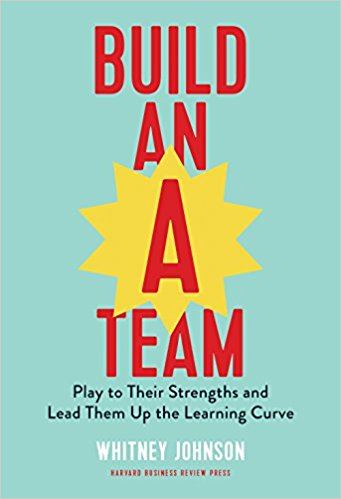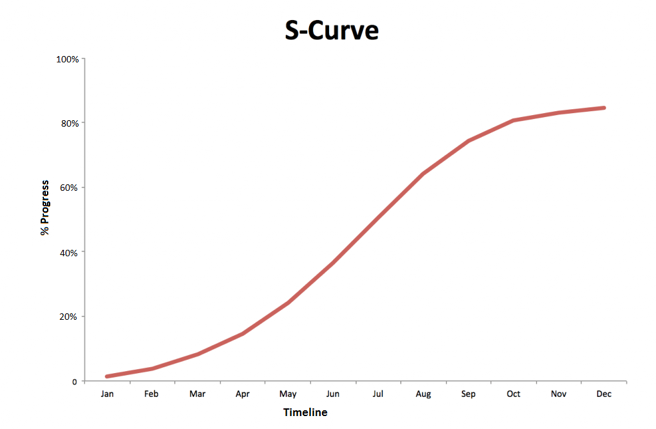
Build an A Team by Whitney Johnson. Harvard Business Review Press: Boston, MA (2018). 194 pages. US$28.00 (hard cover).
Whether you are designated supervisor or manager, most engineers find themselves in a position of leadership. We lead project teams to accomplish specific goals, and we lead R&D teams to explore new scientific frontiers. Moreover, we are all part of teams striving to grow and sustain the organizations where we work.
Whitney Johnson’s recent book, “Build an A Team,” is a short text that teaches us about assembling the right mixture of knowledge and expertise on a team. She also informs us how to better lead and motivate team members with wide variations in skills and experience.
Learning S-Curves
S-curves are common throughout the technological and business worlds. At an early time, the curve has a low value but as time goes on, the slope increases steeply. And near the end of the time period, the curve will again level out. Sales of new products and technical advances in science follow S-curves. And as Johnson illustrates in “Build an A Team,” learning also follows an S-curve. At the beginning of a job assignment, we are often inexperienced. But, as we become familiar with the organization and performance expectations, our learning engagement rises steeply. Then, as we gain mastery and experience in conducting the job’s required tasks and activities, our learning levels out to a slow pace.

Because you wouldn’t want to have a team completely composed of novices or of experts, the author recommends an ideal team composition based on the learning S-curve. She advises that effective teams have about 15% at the low-end, 15% at the high-end, and the remaining 70% in the middle. The team can be highly productive since newbies are typically at the low-end of the learning curve for about six months while engaged and growing team members (in the middle) need three to four years to build expertise. People at the top of the curve should be coached and mentored into new positions where they can start a new learning curve to sustain engagement and motivation.
Accelerating Learning
While each person proceeds through an individual learning curve at his or her own pace, leaders can accelerate a
team’s learning curve. Johnson offers seven tips to help managers support team learning (Chapter 2).
- Become a talent developer.
- Pinpoint employees’ talents and utilize them.
- Use time limits to motivate and hone focus.
- Celebrate success and be generous in helping employees fulfill their potential.
- Sacrifice short-term productivity to encourage curve-jumping.
- Let employees take on uncomfortable challenges and support them through failures.
- Shift players on your team as their skills and talents emerge.
Managing the Team
Recruiting and hiring (Chapter 3) should focus on motivation and purpose as much as acquiring given skills. People can be taught functional skills but fit with purpose and goal-orientation are intrinsic characteristics. I emphasize this point in the Virtual Team Model [1] as well.
New hires at the low-end of the learning curve need support to build their internal networks (Chapter 4). Job rotations are often used in engineering and operations companies for mutual exposure among people and functions. Make sure you set short-term, achievable performance goals for new hires too.
As team members build technical and leadership skills, give them assignments that continue to capitalize on their strengths (Chapter 5). Push these mid-level learning employees to greater investment of effort or ask them to accelerate results. These team members are confident in their abilities but often need a push to independently practice skills (pg. 113).
Finally, the experts who have repeatedly demonstrated mastery are at risk of becoming bored and leaving your organization. You’ll need to motivate experts to become internal pacesetters and leaders, trainers, and/or mentors (Chapter 6). These activities usually require new skills so the master is jumping to a new learning curve where s/he will again be motivated to learn and grow.
Conclusion
Less than a quarter of people feel like they have a clear career path (pg. 4). Engineering managers are in a unique position to help team members and employees accelerate their own development. Understanding the various stages of learning, as described by Whitney Johnson in “Build an A Team,” can help us to become better leaders. Ultimately, our improved leadership as engineering managers leads to better performance for our teams and organizations.
How would you assess the learning levels of your current engineering team?
Works Cited
|
[1] T. Jurgens-Kowal and D. Hardenbrook, "Bridging Communication Gaps in Virtual Teams," in Leveraging Constraints for Innovation, PDMA New Product Development Essentials, Volume 3, Hoboken, NJ: Wiley, 2018, pp. 95-117.
|
About the Author
 Teresa Jurgens-Kowal, PE, CPEM, PMP®, NPDP, is a passionate lifelong learner. She enjoys helping individuals and companies improve their innovation programs and loves scrapbooking. You can learn more about Teresa and her new Innovation MasterMind group by connecting on LinkedIn.
Teresa Jurgens-Kowal, PE, CPEM, PMP®, NPDP, is a passionate lifelong learner. She enjoys helping individuals and companies improve their innovation programs and loves scrapbooking. You can learn more about Teresa and her new Innovation MasterMind group by connecting on LinkedIn.
